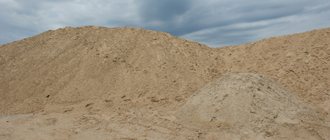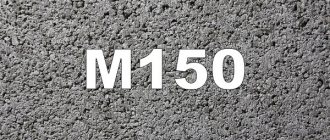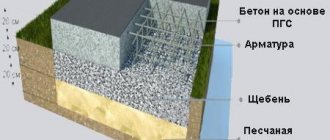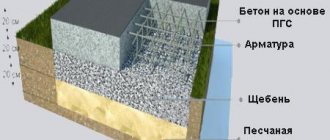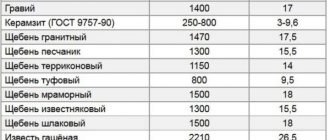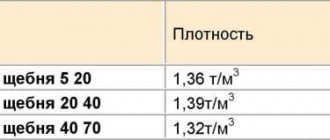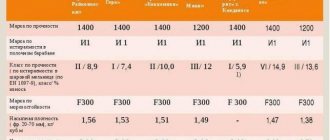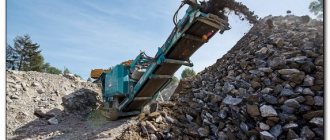Crushed stone is a bulk inorganic building material obtained by crushing natural stone or solid waste building materials. Crushed stone is usually called primary. Pebbles, boulders, pumice, granite and other natural stones are used for its production. Crushed stone obtained from construction waste is called secondary. To obtain it, pieces of concrete, asphalt or brick are processed by crushing.
Crushed primary crushed stone is obtained by screening rocks extracted from quarries. Secondary crushed stone is produced using mechanical crushers, into the receiving hopper of which pieces of concrete, asphalt or crushed brick are loaded.
Both types of crushed stone have very useful properties for construction. They are excellently fixed on surfaces covered with cement mortar. This property is actively used in construction, including roads and railways.
Density
The most important parameter for determining the quality of crushed stone is density. It is the density that determines the strength of the future road surface or building structure. The density of crushed stone is determined by the ratio of mass to volume. It is customary to measure it in tons or kilograms per cubic meter. To more accurately assess density, it is measured in two ways. The first is the total (bulk) density, which takes into account the air space between pieces of dry crushed stone. The second option is true density, which is measured without taking into account the empty space in the measuring container. To do this, crushed stone is additionally crushed in the laboratory until the porosity of the mass is completely eliminated. Such an analysis is done to obtain the most accurate result for carrying out critical engineering calculations. In practice, the bulk density parameter is used much more often. It is this unit of measurement that is used in the production of crushed stone-cement mixtures.
The density of crushed stone can be measured in different ways. Most often this is done using measuring containers or tables. A cylindrical vessel with a capacity of five to fifty liters is used as a measuring container. It is filled with crushed stone with a slide. Then the slide is removed so that not a single crumb rises above the edge of the vessel. After this, the vessel with crushed stone is weighed and the weight of the empty vessel is subtracted from the result obtained. The net weight of the crushed stone is divided by the volume of the vessel and a real indicator of the density of a given batch of crushed stone is obtained.
This measurement can be expressed by the formula: Рн = (m2 - m1): V, where m1 is the mass of the empty vessel; m2 is its mass with crushed stone, V is its internal volume.
Measurement of crushed stone density is done in accordance with GOST requirements. It is allowed to use vessels of strictly defined shapes and sizes. To measure the density of crushed stone of different fractions, only appropriate measuring containers are used. When pouring crushed stone into a vessel, it is prohibited to compact the material, otherwise the measurement will not correspond to the actual density of a given batch of crushed stone. The total density of crushed stone is always higher than the bulk density, and this is quite understandable. Both measurement results are indicated in the accompanying documents. The density of any bulk building materials is measured in a similar way.
It is also possible to measure the density of crushed stone using special tables. In this case, the measurement error will be about one percent. That is, such an error is not critical when designing road surfaces or building structures. The tables show the results of measurements of the density of various types of crushed stone, previously obtained in the laboratory. Using the conversion factor and table data, it is easy to determine the density of a specific batch of crushed stone.
For builders, an important indicator is the bulk density of crushed stone. The strength of the structure or roadway will depend on its size. In addition, the bulk density indicator allows you to take into account the density of the substance that will fill the voids between the pieces of crushed stone. The density of the substance will in any case be lower than the density of crushed stone, even if it is dry sand. In this way, engineers can calculate the actual strength of building or road elements. In addition, knowing the real value of the bulk density of crushed stone allows you to obtain certain savings. For example, with a high bulk density of crushed stone, the rate of cement consumption for the production of the mixture can be significantly reduced. This indicator is also important for the optimal organization of transportation of crushed stone and the selection of the most economical vehicle for this.
The most common types of breeds
Here are the most common types of rocks from which crushed stone is usually made. In first place in terms of frequency of use and popularity is granite. Crushed stone obtained from this rock is very strong, up to grade M1400. This makes it possible to use it for the production of heavy concrete, the strength of which is subject to high demands. Granite has a very low degree of moisture absorption, which in mass terms does not exceed 0.2%. Thus, the frost resistance of granite crushed stone is quite high - about 400 cycles. Granite crushed stone is rightfully considered the best, and therefore the most expensive.
The second most popular type of rock for crushed stone production is limestone. It is clear that in terms of its characteristics it is much weaker than granite, however, its density is 2.7-2.9 t/m3. Such a high density indicator ensures the content of dolomite, quartz, and other particularly strong minerals in limestone rocks. However, the overall strength does not rise above M800 due to weaker bonds between the components. Frost resistance is no more than 150 cycles, due to the fact that limestone absorbs about 2.5% moisture. These features should be taken into account when calculating the amount of water for the solution. Moreover, such characteristics make the use of this rock for construction in the northern regions impossible. In all other areas, mainly only crushed limestone 20-40 mm is used.
In third place is gravel. It has similar characteristics to granite, although it is slightly inferior in strength (M1200), and its resistance to freezing/thawing is 350 cycles. At the same time, the price of this building material is relatively low, since there are many quarries in the Russian Federation where gravel is mined in sufficient quantities. Note that when performing concrete work, preference should be given to mountain gravel, since river gravel will not provide proper adhesion to the cement mortar.
In fourth place in popularity is slag crushed stone. It has quite large differences in characteristics, as it is divided into several types. However, in general, the brands of this material command respect - from M800 to M1200. The density of crushed stone obtained from slag varies between 2700-2950 kg/m3, however, in some designs this is more of a minus than a plus. The percentage of moisture absorption in slag is high and amounts to 1.5%. However, due to the fact that the production of slag crushed stone is, in fact, the recycling of waste from metallurgical production, its price is very low. Thus, the cost of concrete products with crushed slag aggregate is reduced by approximately 20%.
When purchasing building crushed stone, it is enough to read the product passport to find out the exact density and other characteristics of this material.
Order
- 8-499-113-21-11
Bulk density
To convert the mass of crushed stone into volume and vice versa, a unit of measurement is used, such as the bulk density coefficient. This unit is sometimes called the conversion factor or compaction factor. It is worth talking about this coefficient in more detail, giving examples. When crushed stone is brought to a construction site, it is always compacted along the way due to shaking. That is, at the factory the dump truck body was loaded to its full capacity, but the truck arrives at the construction site with an underloaded body. If there was no theft, then the mass of rubble from shaking did not change. The conversion factor allows you to determine this. There is one for each type of crushed stone. The recipient of the cargo knows the volume of the dump truck body and can easily measure the volume of crushed stone in it. By multiplying it by the conversion factor, the recipient will determine the actual weight of the delivered material. This is how crushed stone consumption is recorded.
The conversion coefficient is not constant; it is different for each type of bulk materials. Its absolute value depends on the density of the material, in our case it is crushed stone. So the weight of one cubic meter of granite chips is 2.6 tons, and the same volume of limestone chips will weigh from 2.7 to 2.9 tons. Limestone is heavier than granite due to the presence of dolomite and quartz in its structure. It is clear that with equal weight of two types of crushed stone, their volume will be significantly different.
The difference in volumes with the same mass will be indicated by the true and bulk density of crushed stone. For example, the true density of granite crushed stone with a fractionation of 5-20 millimeters is 2590 kg/m3, and the bulk density for the same volume of granite crushed stone is only 1320 kg/m3. Knowledge of these quantities allows you to accurately calculate the required amount of crushed stone, sand and cement for the manufacture of a specific building product or structural element.
Comparison of indicators
As we know, crushed stone is produced from several types of rocks. Some of them are more affordable, and finding them on the market is not difficult.
When using crushed stone in construction work, it should be remembered that the bulk density of fractional aggregate varies slightly depending on the degree of compaction. So, for example, well-compacted crushed stone of a fraction of 40-70 mm can have the same weight in t/m3 as loose crushed stone of a fraction of 20-40. This feature of this building material raises many questions when accepting it after delivery to the construction site. According to GOST, the compaction coefficient is equal to 1.1. However, when drawing up a contract, options for revising it downwards are possible. In this case, the crushed stone while still in the back of the truck should be measured and multiplied by a coefficient previously agreed upon with the supplier. If the result corresponds to the paid volume or slightly exceeds it, then, of course, there are no complaints against the seller.
Fraction and strength
Parameters such as fraction and strength are also considered important for indicating the quality of crushed stone. The fraction, in other words, the size of crushed stone can be standard, non-standard and European. Crushed stone of the standard fraction has sizes of 5-10, 10-20, 5-20 millimeters, and not the standard fraction of 10-15 and over 15-20 millimeters. European crushed stone has dimensions from 3 to 5 millimeters. The strength of crushed stone can be normal - M 800-1200; high - M 1400-1600; medium - M 600-800; weak - M 300-600 and minimal - M 200.
Main characteristics
As a rule, crushed stone is made from rocks that have a fairly high grain size when chipped. After crushing such rocks, stone chips of various sizes with a rough surface and uneven edges are obtained. This feature ensures reliable adhesion to cement, which guarantees the solidity of the future concrete. The shape of the grains, which is responsible for adhesion, is usually called the flakiness of crushed stone. This indicator is expressed as a percentage. A low flakiness index indicates that the rock contains a large number of “tenacious” grains-plates and needles. However, high flakiness, which means that cuboid-shaped grains predominate in the mixture, is also in demand. This material lends itself well to compaction and compaction, which means it can be successfully used when backfilling foundation cushions and working with bituminous compounds.
In addition to density and strength, crushed stone has other important characteristics that reflect its ability to absorb moisture and frost resistance.
Bulk density of crushed stone. GOST 9758
| Type of crushed stone | Fraction, mm | Bulk density, kg/m3 | Brand |
| Granite | 20-40 | 1370-1400 | M110 |
| 40-70 | 1380-1400 | M110 | |
| 70-250 | 1400 | M110 | |
| Limestone | 10-20 | 1250 | M110 |
| 20-40 | 1280 | M110 | |
| 40-70 | 1330 | M110 | |
| Gravel | 0-5 | 1600 | M110 |
| 5-20 | 1430 | M110 | |
| 40-100 | 1650 | M110 | |
| More than 160 | 1730 | M110 | |
| Slag | 800 | M800 | |
| Expanded clay | 20-40 | 210-340 | M200, M300 |
| 10-20 | 220-440 | M200, M300, M350, M400 | |
| 5-10 | 270-450 | M250, M300, M350, M450 | |
| Secondary | 1200-3000 | M110 |

